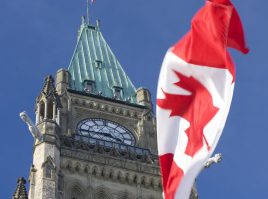
On June 23, two senior Canada Revenue Agency
(“CRA“) officials outlined a status
update on tax controversy and dispute resolution at this stage of
the COVID-19 pandemic. This previewed the CRA’s progression
from “critical services” mode, to a “business
continuity” plan and finally to a “business
resumption” plan starting June 29. As the presentation was not
recorded, we are providing our list of ten top ten areas
addressed.1
-
- Notices of Objection
-
- While most CRA Appeals officers are
working from home and can only take their work so far, progress
continues being made with technological capabilities. Therefore, in
the near term taxpayers might expect some delay in resolving their
disputes.
- While most CRA Appeals officers are
-
- However, work on files referred to
CRA headquarters for review (including large files, aggressive tax
planning and transfer pricing) has mostly been ongoing despite the
pandemic. If anything, the shutdown may have enabled CRA officials
at headquarters to catch up on workload.
- However, work on files referred to
-
- The CRA’s Appeals division will
continue accepting supplemental submissions.
- The CRA’s Appeals division will
-
- Notices of Objection
-
- Reassessments
-
- While the Assessment, Benefit, and
Service Branch had been devoted to dealing with subsidy and support
programs during the pandemic and therefore had limited capacity to
process and issue reassessments, these are now advancing. The CRA
is seeking to be sensitive to the needs of individuals and small
businesses and is showing forbearance for now, unless a
reassessment needs to be issued immediately (for example, where the
year or period may become statute-barred).
- While the Assessment, Benefit, and
-
- When a CRA Appeals officer has
concluded that an assessment should be varied or vacated,
reassessments generating a refund are a priority. There may be some
delay for complex matters while an Appeals recommendation gets
reviewed at a higher level.
- When a CRA Appeals officer has
-
- Reassessments
-
- Transfer Pricing
-
- Advance Pricing Arrangements and
Mutual Agreement Procedure matters remain in progress and timelines
for mandatory arbitration are not delayed, as pending matters have
been moving forward.
- Advance Pricing Arrangements and
-
- Submissions to the Transfer Pricing
Review Committee are being accepted and considered and outstanding
requests for contemporaneous documentation that were cancelled have
since been reissued (thus, as of June 10, the compliance clock for
contemporaneous documentation is again ticking).
- Submissions to the Transfer Pricing
-
- Transfer Pricing
-
- Impending Statute-Barred Dates
-
- Treaty-based limitation periods are
fixed and as a result meeting them has remained a high
priority.
- Treaty-based limitation periods are
-
- For domestic limitation periods, the
CRA is receptive to waivers of the normal reassessment period and
managing files that may become statute-barred remained a
priority.
- For domestic limitation periods, the
-
- Impending Statute-Barred Dates
-
- Bill C-17, An Act respecting
additional COVID-19 measures-
- This proposed legislation (which has
so far only gone through first reading in Parliament), will allow
for Ministers with responsibility for particular Acts of Parliament
to adjust listed time limits and periods under those statutes.
- This proposed legislation (which has
-
- The Minister of National Revenue will
have the power to extend certain deadlines under the Income Tax
Act (Canada) (“ITA“) and the
Excise Tax Act (Canada)
(“ETA“). The normal reassessment periods
and related exceptions under the ITA and ETA may be extended and
the rigid timing requirements for SR&ED filings would also be
relaxed. The draft legislation would also address the time periods
for seeking an extension of time to object to an assessment.
Missing a deadline to object can be addressed by seeking an
extension of time, but ordinarily if the extension period lapses a
taxpayer would be irrevocably prejudiced. Whether the legislation
is ultimately enacted is uncertain and taxpayers are urged to file
objections or extension requests as soon as possible, rather than
planning to rely on proposed extensions in the draft
legislation.
- The Minister of National Revenue will
-
- The purpose of Bill C-17 is primarily
to assist the Canadian public and if/when the legislation is
enacted it is expected to be interpreted fairly and reasonably. The
CRA is unlikely to try to take advantage of any retroactive effect
to reopen periods that became statute-barred in the time leading up
to the legislation being enacted.
- The purpose of Bill C-17 is primarily
-
- Bill C-17, An Act respecting
-
- Late-filed Elections, Designations
and Objections-
- Taxpayers should not count on blanket
automatic extensions of time for late-filing elections,
designations or notices of objection. There are subtleties in the
interpretation of the relevant provisions and taxpayers and their
advisors should look not only at the statute(s), but at the
CRA’s published guidance. For notices of objection that were
due between March 18 and June 30, the filing deadlines have been
automatically extended to June 30.
- Taxpayers should not count on blanket
-
- Late-filed Elections, Designations
-
- Taxpayer Relief
-
- Taxpayer relief can be granted
proactively or on application by a taxpayer. The CRA typically
grants proactive relief where it recognizes its own delays in
managing a file have resulted in interest accrual. Where the CRA
has extended certain filing deadlines, neither penalties nor
interest will be charged, if the filings are made by the extended
deadline.
- Taxpayer relief can be granted
-
- Otherwise, whether a taxpayer may be
granted relief in connection with the pandemic is determined on a
case by case basis. Some audit and appeal work has continued, while
some files have stalled. If a matter has progressed despite the
pandemic, there would be no basis for interest relief.
- Otherwise, whether a taxpayer may be
-
- The CRA anticipates a deluge of
relief requests and recommends filing them online to help expedite
review and results.
- The CRA anticipates a deluge of
-
- Taxpayer Relief
-
- Voluntary Disclosures Program
(“VDP“)-
- The VDP has resumed operations and
has been gradually expanding its operations since mid-May. However,
there is a backlog, due to both the influx of applications made
before the VDP changed in 2018 and the pandemic.
- The VDP has resumed operations and
-
- Voluntary Disclosures Program
-
- Taxpayer Communications
-
- The best way to liaise with the CRA
is often through its online portal. Information can be uploaded
with a limit of 150MB per file (large files might need to be broken
up). The CRA’s e-services helpdesk can provide support and can
be reached at 1-800-959-5525.
- The best way to liaise with the CRA
-
- While CRA officers may in certain
circumstances communicate via cell phones or email, this is
regarded as insecure and thus at the taxpayer’s own risk. Video
conferencing may become an option at a taxpayer’s request. For
now, there are no in person meetings.
- While CRA officers may in certain
-
- Everyone at CRA headquarters should
be available and approximately 70% of the rest of the workforce
should be reachable. It cannot yet be guaranteed that everyone is
checking messages and returning calls.
- Everyone at CRA headquarters should
-
- Regular mail of course remains an
option as mailrooms become increasingly operational, although
perhaps less timely.
- Regular mail of course remains an
-
- Taxpayer Communications
-
- Requirements for Information
(“RFI“) and Audits-
- For pending RFIs, the CRA will
contact taxpayers if the requested information is still needed.
RFIs issued before March 16 with deadlines after that date will be
reviewed.
- For pending RFIs, the CRA will
-
- The CRA plans to be accommodating
with the timing for complying with 30 day letters, unless a
taxation year may imminently become statute-barred.
- The CRA plans to be accommodating
-
- Requirements for Information
Footnote
1. This summary is based on our notes from the
Advocates’ Society event, provided as a service for the
information and benefit of interested parties unable to attend.
Accordingly, while this reflects our best efforts to accurately
transmit helpful information to our readers, it should not be taken
as setting out official CRA positions.
“Read the original article on GowlingWLG.com“.
The content of this article is intended to provide a general
guide to the subject matter. Specialist advice should be sought
about your specific circumstances.
POPULAR ARTICLES ON: Tax from Canada
There are two types of residence for taxpayers; their immigration residence and their tax residence. A taxpayer can be resident of one country for immigration purposes and resident of an entirely different country for tax purposes.
Crowe MacKay LLP’s trusted advisors work for you – this means we take the time to know our clients. Whether it’s your first time filing taxes, or you consider yourself a pro…
Share This Story, Choose Your Platform!
Related Posts
Recent Posts
- The government grant landscape is changing; how does IT fit in?
- The government wants CATA’s advice on how to improve SR&ED funding
- Impact of COVID-19 on the SR&ED Tax Credit
- Everything you must know about scientific research and experimental growth
- As Liberals tout ‘innovation agenda,’ CRA keeps scaling back SR&ED credits: CATA


